Before learning about the various companion plants for mint (both good and bad) as we will below, let’s start off by both understanding the concept of companion planting and knowing what mint is as well as the different types of mint.
Companion planting involves creating a cordial relationship between the plants in a garden or farm.
It is a technique that ensures a conducive environment for crops as they are being cultivated by growing friendly ones near each other.
The general intent is improved yield, companion planting has to do with planting crops in such a way that they both or all benefit from each or one another, or one/ some benefit(s) while the other(s) is/ are not harmed.
Some benefits of companion planting are the attraction of useful insects, repelling of harmful insects, repair of nutrients in the soil, improvement of plant taste and health, maximization of garden space, and preservation of crops against diseases.
All in all, when a farmer or gardener considers and grows together different pairs or groups of plants that do not compete with each other but benefit one, some, or all of the crops involved, this is considered companion planting.
Mint (Mentha) is a genus of about sixty (60) flowering plants in the biological family Lamiaceae.
Plants in this genus are aromatic, mostly perennial, herbaceous species that may have hybrids (crosses between two or more different species) and cultivars (varieties developed from natural species).
They grow fast and some are very invasive. Species may have leaves of different colors, including blue, dark green, grayish green, pale yellow, and purple.
Their flowers usually are in any shade of color from white to purple.
Explained below are twenty-four (24) good companion plants for mint and nine (9) bad companions for this type of plant.
The plants are briefly introduced and reasons are then given why they are good or bad for your mint.
Because mint, no matter what kind, notoriously spreads its horizontal roots throughout your garden, it can easily dominate the area in which it is planted, conquering the root systems of plants grown near it if it is allowed to.
The best solution for this is to plant mint on its own, in a pot or some other container, and then keep this pot near your other garden plants.
You could also grow it beside some good companion plants that do not mind mint in the garden.
Table of Contents
24 Great Companion Plants for Mint
1. Beans
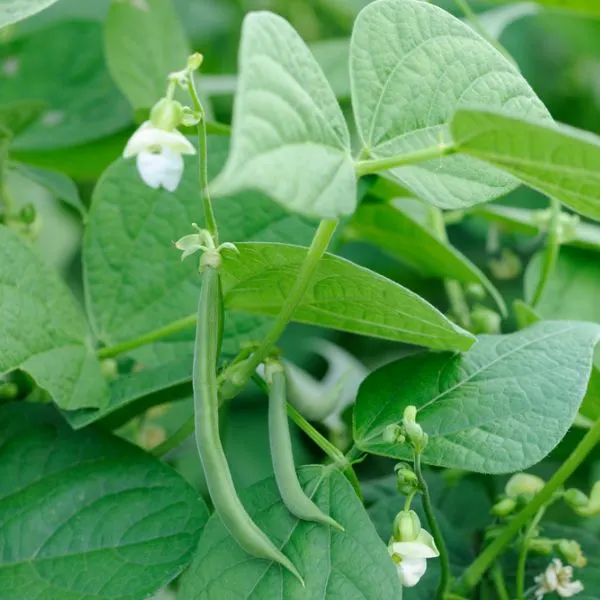
Beans are seeds of several genera of flowering plants that belong to the botanical family Fabaceae.
These seeds are then boiled, fried, baked, or cooked by some other method and used as vegetables for humans or animals to eat.
Mint and bean plants are useful to each other in the garden, mostly pole beans, and bush beans.
Beans are legumes and so they fix nitrogen in the soil. This means that they help replenish used-up nutrients in the soil.
Beans and mint do not inconvenience each other in terms of water needs because they both like moisture.
However, they both have shallow roots and uncontrolled mint can take over the space of bean plants in your garden.
Also, bush beans like full sunlight, and mint can shade these plants too much.
This can be avoided by planting mint in its own container but it means the nitrogen-fixing property of beans in the soil will not be enjoyed by your mint.
When in the ground or a pot beside beans, mint is beneficial.
The strong aroma of mint is a deterrent to and is disliked by many animal and insect pests.
It can keep mice and moles away from your beans, improving yield.
2. Beets
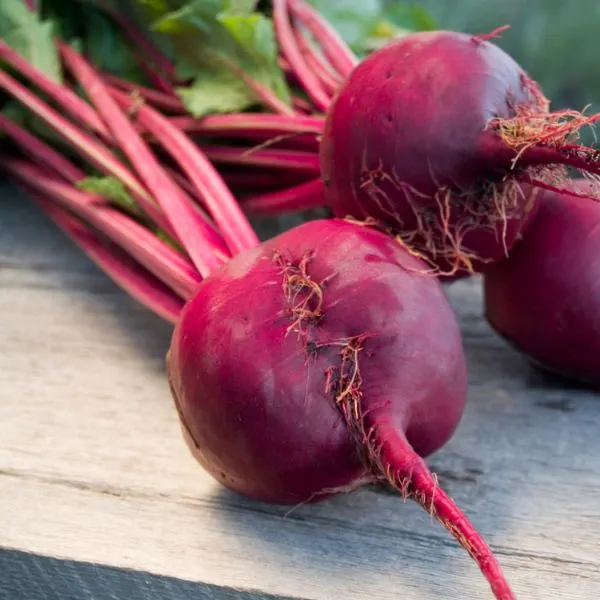
Beets are flowering plants in the amaranth family grown for their edible taproots, called beetroot, and leaves, called beet greens.
This species goes by several other names, including dinner beet, garden beet, red beet, and table beet.
Another good companion plant for mint is beet, although you will have to grow these plants separately.
This is because even though they both like consistent moisture, the roots of both are shallow with the roots of beet easily disturbed.
Beets are easy to grow and so are not stressful to add to your garden or care for.
If mint is grown near beets, it helps deter a number of pests that are likely to attack your beet plant, reducing its yield.
The most common pests that attack beets are aphids, blister beetles, corn borers, cyst nematodes, flea beetles, leaf miners, leaf hoppers, rove beetles, spider mites, vegetable maggots, and webworms.
Of all these pests (which might seem like a lot), mint is known to keep aphids and flea beetles away from your beet.
Beets might not seem to provide many benefits to mint plants but they are very comfortable when not planted in the same soil.
3. Bok Choy
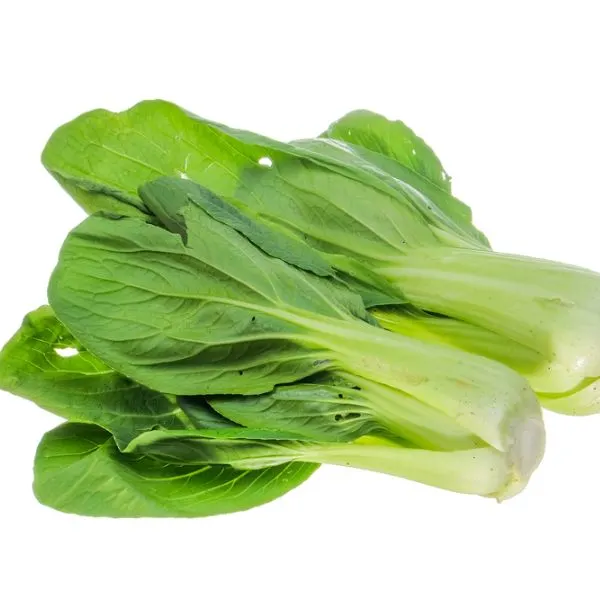
Also referred to as pak choi or pok choi, bok choy is a variety of Chinese cabbage used for food.
This type does not form heads, unlike the common cabbage. Instead, its green leaf blades fade to a lighter bulb-shaped bottom.
Mint and bok choy are ideal companions.
It is advised to separate them in the garden bed, ideally by making use of a physical barrier or growing your mint in a container of its own where its roots are free to spread comfortably.
This is because bok choy and mint both have shallow roots and need similar but not exact care.
They can compete for space and nutrients. Mint helps improve the growth and health of bok choy plants.
It does so by repelling some of the pests that bok choy is susceptible to, like aphids, cabbage moths, and flea beetles.
Mint also attracts harmful insects to itself and tachinid fly larvae that prey on squash bugs, cutworms, and caterpillars.
4. Broccoli

Another good companion plant for mint is broccoli.
Broccoli is a flowering plant in the cabbage family Brassicaceae. The large, partially developed green flowers that make up its head, its stalk, and its leaves are the edible parts of the plant.
Mint and broccoli are ideal when placed together but not when grown in the same soil.
Broccoli, like other plants in its family (brassicas), is a heavy feeder. This means that they require more nutrients and water than most other plants.
And the two of them have shallow roots. The combination of the facts that mint spreads quickly and broccoli is a heavy feeder means that there would be competition between these two if they are planted together.
To solve this problem, place mint grown in its own separate vessel beside the broccoli in your garden.
What mint does for this plant is mask its scent with its own stronger and insect or pest-repellent odor.
This confuses and deters insects like cabbage moths or cabbage loopers and flea beetles (although some also hold the opinion that mint attracts flea beetles).
Mint also improves the taste of broccoli.
5. Brussels Sprouts

Very popular in Brussels, Belgium, Brussels sprouts are flowering plants in the Brassicaceae family grown for their edible buds.
They are green leafy vegetables that look like very small cabbages.
Brussels sprouts are good companion plants for mint.
They should not be grown in the same soil to avoid competition. This competition arises from the mint’s tendency to dominate the soil it grows in and Brussels sprout’s heavy feeding.
If you grow your mint in its own pot and place these plants side by side, mint can benefit Brussels sprouts.
Its strong scent repels cabbage loopers that stung its companion.
Bear in mind that mint may attract flea beetles.
6. Cabbage

Cabbage is another brassica that benefits from growing near mint plants. It is a flowering biennial plant that may be white, red, or green.
However, it is mostly grown as a vegetable crop for its edible tightly packed, and layered leaves.
Mint is useful to cabbage in the same way it is to other plants in its family.
It keeps away pests of cabbage like aphids, cabbage loopers, and sometimes flea beetles.
When grown in the same soil, mint helps the flavor of cabbage.
It is not advisable to plant them in the same soil.
Cabbage needs plenty of nutrients to grow well and mint has quickly spreading roots, so competition between the two is likely.
Grow mint in its own pot instead.
7. Carrots
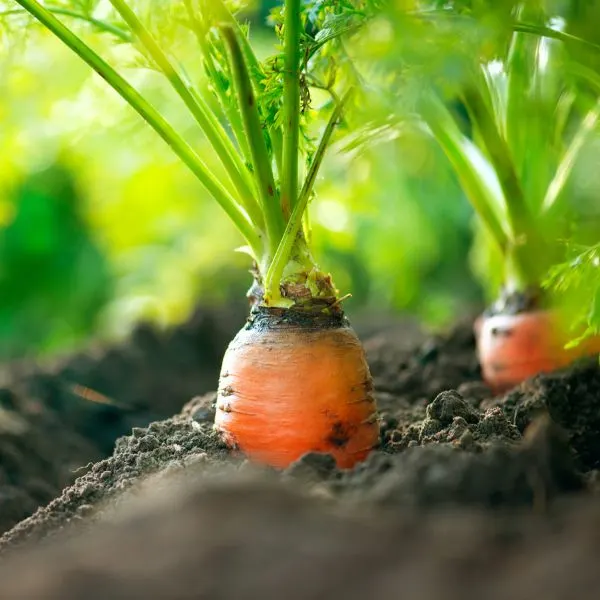
Another suitable companion for mint is a carrot.
Carrots are edible root vegetables with usually orange taproots and green leaves on top of the root.
Cultivars in white, yellow, red, purple, and black also exist, with this root typically tapering.
One of the most popular problems carrots encounter while being grown is attack by carrot flies.
These pests lay eggs around the roots of carrots. The larvae that hatch from the eggs eat into the root, tampering with its growth and yield.
Mint is a good repellent for these carrot root flies.
Its strong aroma masks the scent of growing carrots and in doing so confuses these pests. Of course, this method is not one hundred percent effective but it gives young carrots a chance.
When mint is allowed to blossom, its beautiful flowers can attract beneficial insects to your garden which aid pollination.
By deterring pests and attracting useful insects to your carrot plants, mint helps increase yield.
8. Cauliflower
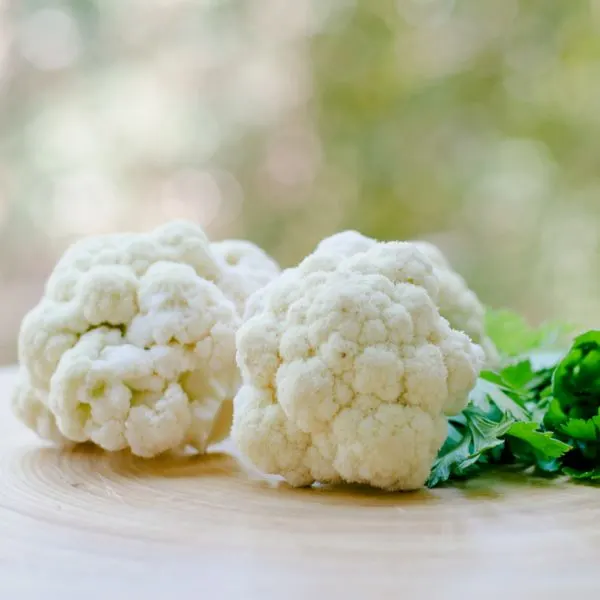
Cauliflower is another flowering plant in the cabbage family.
This vegetable is cultivated for its partially developed flowers, referred to as the head or “curd”, which are edible and mostly colored white, yellow, green, orange, brown, or purple.
Although it is a good companion plant for mint, it is advisable to plant them separately.
If planted together, uncontrolled mint can spread and dominate the area while the heavy-feeding cauliflower competes with it for nutrients.
When mint is grown in its own pot, it can repel certain harmful insects that usually attack cauliflower.
Some are flea beetles, aphids, and cabbage moths.
Mint also brings useful insects that foster pollination and prey on pests to your garden.
9. Cilantro

Known also as Chinese parsley, coriander, or dhania, cilantro is an annual flowering plant with edible plant parts.
The fresh leaves and dried seeds of this aromatic herb are the parts most used for culinary purposes.
Mint does not like the presence of many herbs beside it but cilantro is suitable.
This is because the growth needs of these two are quite alike.
Both cilantro and mint require full sunlight exposure and consistently moist but not soggy soil.
The joint aroma of the herbs cilantro and mint will be effective in keeping harmful insects away from your garden.
This relationship deters aphids, cabbage loopers, flea beetles, flies, moths, potato beetles, spider mites, and other pests.
Also, like mint, cilantro has stunning flowers that attract both pollinators and insects that prey on pests.
Some of these beneficial insects are bees, hoverflies, lacewings, ladybugs, parasitoid wasps, and tachinid fly larvae.
Growing mint and cilantro together proves to be beneficial not only to the pair but to some of the other plants in the vicinity.
On its own, mint cannot ward off some of the pests attracted to it and since some other herbs dislike being grown around mint, cilantro can help with this.
10. Eggplants
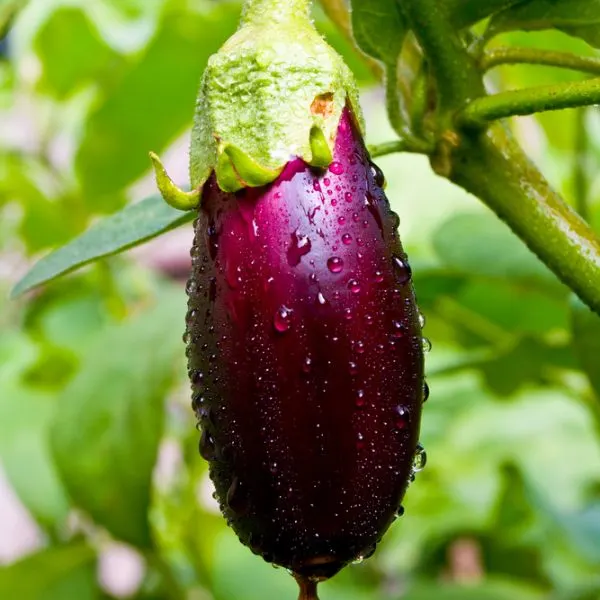
The vining plant called eggplant is also referred to as baby marrow, courgette, or zucchini.
It is a summer squash, a herb grown for its fruits which are harvested when they still have immature seeds and soft rinds that are edible.
It makes a good companion for mint.
Mint can benefit by repelling some pests that it is easily susceptible to. Mint can keep aphids, flea beetles, spider mites, and squash bugs away from your eggplants.
This can be done by keeping these away by their scent or by bringing predatory insects to the garden to feed on the pests.
Mints’ flowers also attract pollinators. In these ways, mint helps improve the harvest of the eggplants in your garden.
Consider the light requirements of eggplants when growing them with mint plants.
Like mint plants, eggplants require full exposure to sunlight.
They might not grow longer than mint so keeps them in a position where mint does not shade them.
11. Garlic

On its own, garlic is a great pest deterrent, known to repel several pests including aphids, cabbage loopers, and spider mites.
Growing mint and garlic together provides more pest-repellent benefits for other crops near them.
Garlic is a flowering plant in the genus Allium, alongside chives, leeks, onions, and shallots.
It has a pungent bulb divided into cloves which are used to season food or make oil used by spraying to deter pests.
This plant emits sulfur, a fungicide (a substance that helps protect your crops from fungal diseases).
Some other pests that garlic can keep away from the garden are deer, fungus gnats, Japanese beetles, rabbits, and snails.
Mint can grow well with it because garlic is not the pickiest crop to grow.
As long as it gets full exposure to sunlight and just enough water to avoid stress from drought or bulb rot from overwatering, the plant tends to be comfortable.
The companionship of mint and garlic helps deter certain pests of mint and other plants while hardly inconveniencing any of the pair.
Mint can also bring helpful insects to the area, enhancing the growth of garlic and other garden crops.
12. Kale
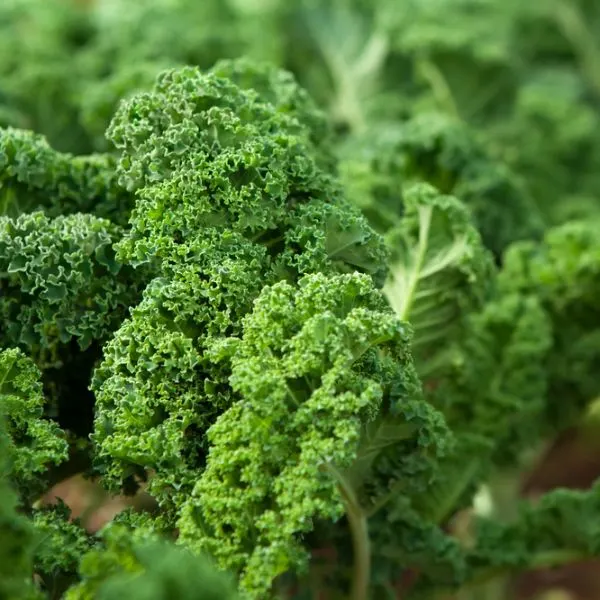
Kale is another suitable companion plant for mint.
It is one of the flowering plants in the cabbage family, with edible green or purple leaves that do not form a central head.
Kale is also called leaf cabbage and its leaves may be eaten or used for ornamental purposes.
Kale needs more nutrients than most plants and mint spreads very quickly if it is allowed to.
For these reasons, growing them in the same soil will lead to competition.
Avoid this by planting mint in a separate container.
Placing contained or demarcated mint beside kale improves the health of your vegetable.
This is because the strong smell of mint can repel pests like aphids and cabbage moths. Its flowers may attract beneficial insects to your kale as well.
13. Kohlrabi
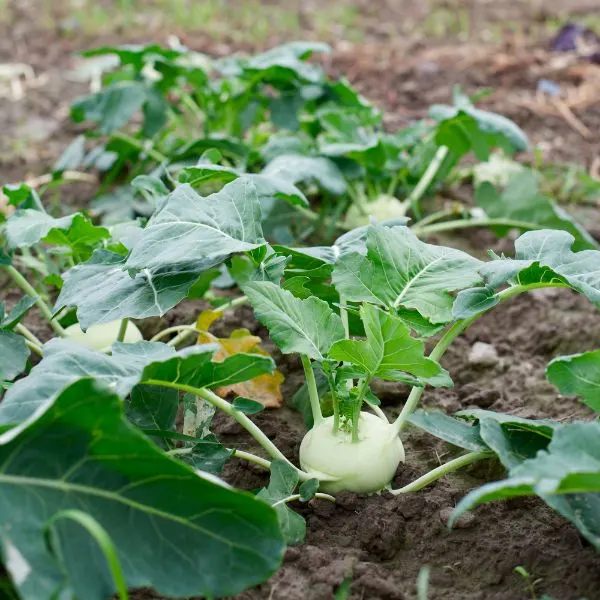
Yet another brassica you should consider planting with mint is kohlrabi. It is a variety of wild cabbage with thin stems and yellow flowers also known as the German turnip.
Its stems and leaves are edible and it tastes very much like cabbage.
As with other plants in its family, separate kohlrabi from the mint.
You can use a physical barrier to demarcate them in the soil or plant mint in a different vessel.
This way, they would not have to fight for root space and soil nutrients.
Mint can repel pests of kohlrabi with its strong, sharp aroma, bring beneficial insects to your garden through its beautiful flowers, and improve the taste of kohlrabi if they are planted in the same soil.
Mint fosters the health of kohlrabi.
14. Lettuce

Mint can also grow well with lettuce beside it.
Also grown for its stem and seeds, lettuce is a flowering annual plant mostly cultivated for its leaves, and used as a leaf vegetable.
It is most often eaten in salads but may be added to other foods.
Lettuce benefits from the presence of mint beside it.
They also do not inconvenience each other, as they both like full exposure to sunlight and moist but not soggy soil.
They both have shallow roots so mint tends to dominate the area.
The most common insect pests of lettuce are slugs.
Some others are aphids, cabbage loopers, caterpillars, cutworms, flea beetles, leaf miners, thrips, weevils, and whiteflies.
Mint plants can help keep some of these away.
Mint repels the aphids, cabbage loopers, flea beetles, slugs, and whiteflies that would otherwise devour the leaves of your lettuce plants. It also attracts tachinid flies.
These lay eggs whose larvae prey on caterpillars and cutworms.
Lettuce can also benefit from the partial shade that tall mint plants provide.
Although lettuce plants like the sunlight, they appreciate shade.
Growing them near taller varieties of mint helps give them some shade.
15. Marigolds
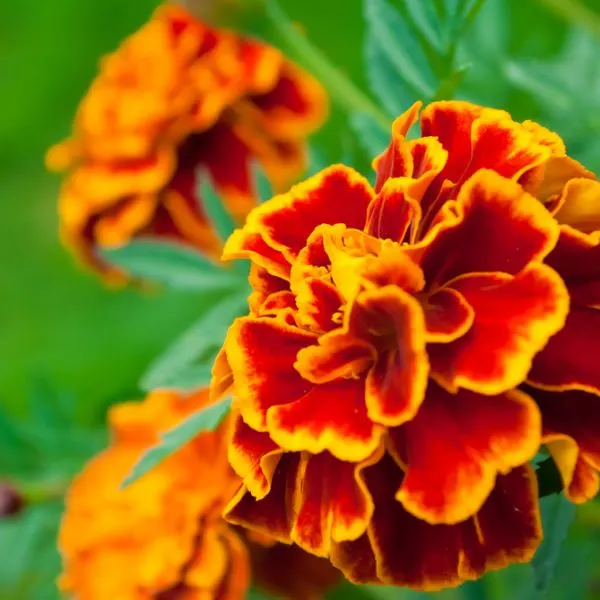
Marigolds are flowering annual or perennial plants in the same family as lettuce: Asteraceae, or the daisy family.
They come in several sizes, with green feather-like leaves and flowers which may be gold, orange, white or yellow in color.
While many different species of marigolds exist, they like full exposure to sunlight in general. Some are drought resistant and can stand low moisture levels.
Others like moisture more but they all thrive in fertile, well-drained soil.
Because mint tends to be invasive, be careful when planting these two together. Preferably, use a separate container to grow mint and place this beside the marigolds.
Another way would be to cut up mint sprigs and place them near.
Just like mint, marigolds have a sharp or pungent smell.
The presence of both of these plants in your garden can keep several harmful insects away while attracting beneficial ones.
The flowers of marigolds are very attractive to pollinators.
Marigolds repel aphids, cabbage worms, cucumber beetles, nematodes, potato beetles, rabbits, and squash bugs.
They also attract hoverflies whose larvae prey on aphids. You can also use marigolds as trap crops.
16. Onions
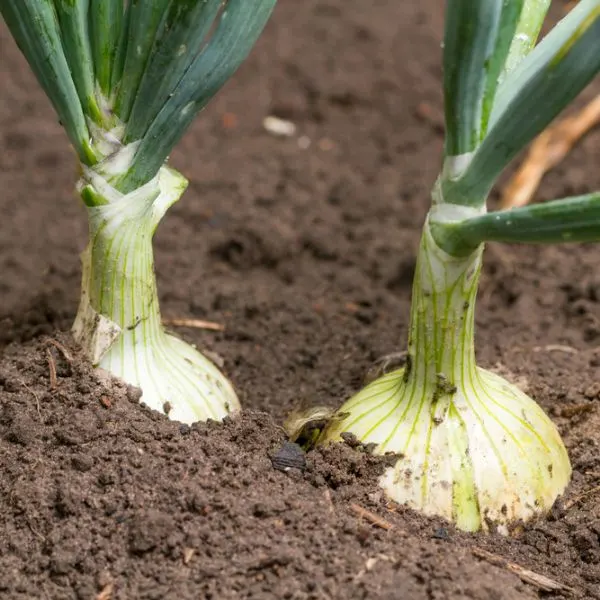
Another good companion plant for mint is the onion.
The onion is the most widely cultivated vegetable in the Allium genus.
It has bluish-green leaves and a bulb at its base made up of shortened underground stems and fleshy modified leaves.
Onions deter several pests themselves but are susceptible to attacks from onion flies.
When mint is grown near onion plants, its scent can mask that of onions, confusing onion flies that find their food by smell.
Onions in turn repel aphids, Japanese beetles, and rabbits.
They can help keep these pests away from your mint and other plants around them.
A combination of the pungent odor of both plants can deter pests from your garden.
It is also believed that onions can help improve the taste of mint plants when grown in close proximity.
Planting this pair together is quite convenient in that onions also need lots of water to form properly and many hours of full exposure to sunlight daily.
17. Peas
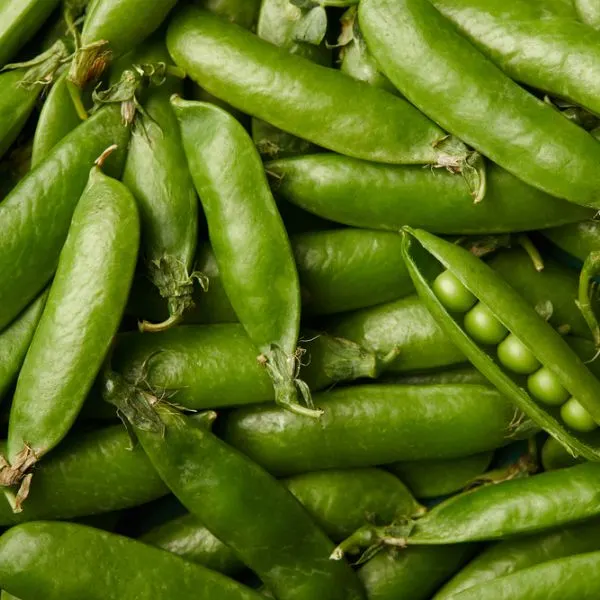
Peas are herbaceous flowering annual plants in the same biological family as beans.
Also garden peas, these plants are cultivated in various parts of the world for their edible seeds.
They are not vegetables but they are cooked as such.
Like beans, they are leguminous plants, meaning that they fix nitrogen in the soil.
They replenish used-up nutrients in the soil this way, but mint might not benefit from this.
The reason is that both should not be grown in the same soil.
Unlike mint, peas do not like full sun exposure but prefer cool and shaded areas to grow and mature properly.
They also require moderate amounts of moisture. Their roots are shallow so mints can easily dominate the area.
After demarcating these plants, peas can benefit from having mints near them. Mice, moles, and rats are some animal pests of peas.
They dislike the smell of mints so the presence of mints deters these pests.
18. Pepper Plants

Mint is beneficial to many pepper plants.
Pepper plants are flowering plants of the nightshade family, like eggplants and tomatoes.
Several species and cultivars exist, even in various colors like red, yellow, orange, green, white, and purple.
Peppers are susceptible to attacks from aphids, flea beetles, and spider mites.
These are pests that mint can help control, although mint is thought to attract flea beetles themselves.
The yield of pepper plants is improved this way.
Be that as it may, it is not advisable to grow them side by side in the same soil without physical barriers or demarcations.
The best way to grow them together, like in other examples, is to nurture mint in its own container kept beside pepper.
While it has been established that mint’s horizontal roots are very invasive, peppers need less moisture than mint plants do.
They prefer to be dry than too wet, although they also like full sun for proper growth and ripening.
19. Potatoes

Potatoes are members of the nightshade family Solanaceae, like eggplants and peppers.
They are perennial plants grown as root vegetables. These starchy tubers primarily contain carbohydrates, protein, and fiber, with very little fat content.
Potatoes also get attacked by aphids, flea beetles, and spider mites.
The pungent odor of mint is thought to repel and get rid of these pests. Mint can help protect potato plants from being destroyed by several harmful insects and animals.
When allowed to blossom, the flowers of mint plants attract a number of beneficial insects to potatoes.
These insects may be useful for pollination or may prey on several other harmful insect pests of potatoes.
Ants, mice, and other rodents may also be kept away from potatoes by the smell of mint which they dislike.
This pairing might not be the most beneficial to mint but it does the mint plant no harm and benefits the potatoes.
20. Radishes
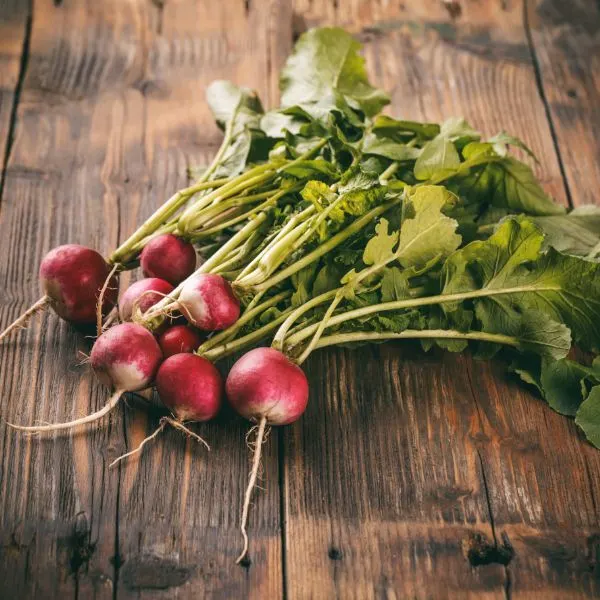
One more brassica that tends to be a good companion for mint is the radish.
This plant benefits from having mint plants around it but it is not advisable to grow both of them close to each other in the same soil.
Radishes are root vegetables with cultivars in different colors, sizes, and shapes.
The roots and green leaves above it are edible, typically eaten raw as a salad vegetable or with other foods after being cooked by several cooking methods.
Because mints have quickly spreading horizontal roots and radishes need lots of nutrients and water to grow properly, it is likely to be a competitive environment for the plants if they have to grow in the same soil.
However, when mint is grown in its own separate vessel and placed beside radishes in the garden, several animal and insect pests are kept away from your radish.
These include aphids, cabbage loopers, cutworms, deer, and flea beetles.
Mint helps the growth and vigor of radish plants.
It helps deter pests and could even attract useful pollinators to the garden to aid the development of your radishes.
By doing so, mint helps improve the taste of radish.
21. Roses
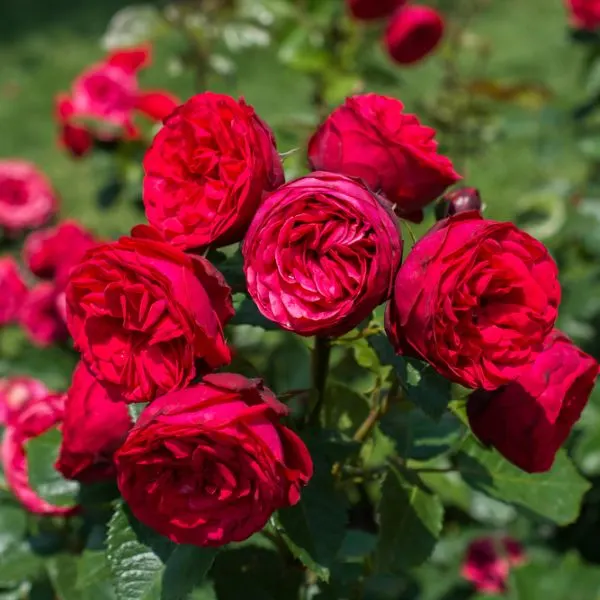
Mint is a useful companion to roses. Roses are biennial or short-lived perennial plants.
They are woody flowering plants that have distinct flowers which are popular for ornamentation and different species or cultivars have peculiar colors.
Ants, aphids, and mealybugs are attracted to roses, feeding on them and destroying the plants. Cultivating mint in the vicinity repels them and keeps these pests away, reducing the chance of the roses being destroyed.
They are also comfortable growing together because they have requirements and care needs. Roses, like mints, love and appreciate full, direct sunlight.
Roses have long, shallow roots that thrive in moist soil.
Mints produce beautiful flowers that attract pollinators to them and other plants in the garden.
When you grow mint beside your roses, these insects are drawn to the plants, as roses also produce stunning flowers when in bloom.
22. Squash

Squashes are herbaceous vegetables in the Cucurbitaceae family, the gourd family.
This genus comprises many different species grown to be consumed as vegetables.
They also serve as very good companion plants for mint.
These plants have long taproots but the rest of their roots are short.
As a result, they need a constant water supply in order to grow and maximize yield.
They also enjoy full sunlight for about 6 hours daily to develop properly.
Owing to the fact that squashes and mint plants have some requirements which are alike, they will not significantly discomfort each other.
The only pointer would be to take care that the roots of the mint plants do not dominate the area.
Several insects can cause damage to your squash. Some are aphids, cucumber beetles, pickle worms, spider mites, squash bugs, and whiteflies.
Mints can keep some of these pests away with their strong and sharp smell.
Mints can also drive these pests away by attracting predators like tachinid flies.
The larvae of tachinid fly prey on squash bugs.
Useful insects that aid pollination can be drawn to your squash because of the mint plants and their flowers.
23. Swiss Chard
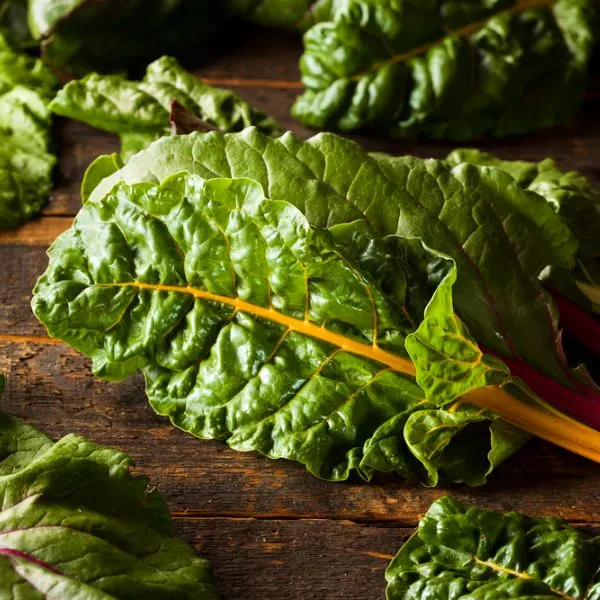
Also known as beet spinach, chard, leaf beet, perpetual spinach, or silver beet, Swiss chard is a leafy green vegetable of the same species as beets.
It is cultivated for its leaves and stalks which are usually cooked and eaten.
Swiss chard requires even, moderate and consistent levels of water for best results, although it can withstand little bouts of drought.
It also prefers full exposure to direct sunlight even though it can tolerate shade in warmer months.
Seeing as mint and Swiss chard have similar growing needs, they can grow together.
However, we know that mint tends to be very invasive.
For this reason, it is advisable to grow mint on its own or put up physical barriers between the two plants.
Mint can benefit Swiss chard by warding off some of the pests whose attacks the vegetable is susceptible to.
These include aphids, blister beetles, leaf miners, and Lygus bugs.
The smell of mint repels some of these.
24. Tomatoes

Another very good companion plant for mint is the tomato.
The tomato plant is a flowering plant in the nightshade family Solanaceae.
It is widely grown throughout the world for its red fruits commonly used as a culinary vegetable.
Like mint, tomatoes need full sunlight, for about eight hours daily, in order to develop properly.
When they are still very young, they love lots of water.
The likeness of their growth needs makes mint and tomato suitable for planting together.
So many pests are attracted to tomatoes. Aphids, beetles, borers, cutworms, fruit worms, hornworms, slugs, spider mites, and thrips are a few examples.
Having mint around can help reduce the amount of destruction done by these pests.
Mint, when left to bloom, produces beautiful flowers that can draw beneficial insects to your garden.
These insects can help control pests by preying on them or aiding pollination.
They are useful to the mint, tomato, and other plants around them.
In all, mint encourages the proper growth of tomatoes.
By keeping pests away and drawing beneficial insects to your tomato plant, mint helps it yield healthier fruits with better, more improved taste.
9 Bad Companion Plants for Mint
1. Basil
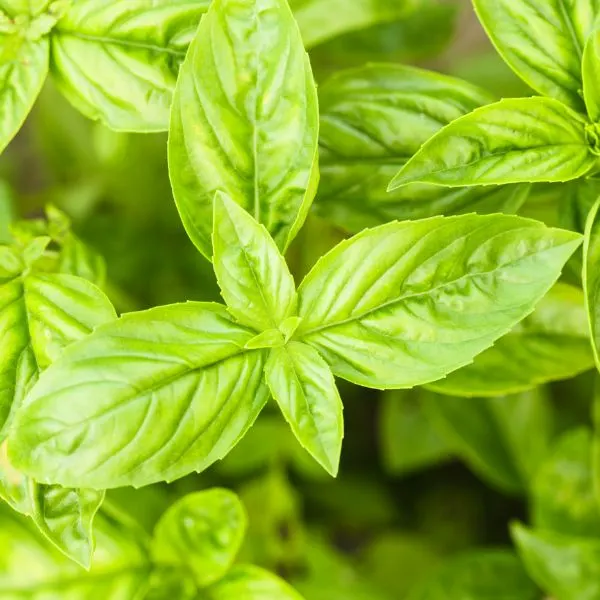
Mint can grow well with some herbs but basil is not one of them.
Basil is a bad companion plant for mint. Some other herbaceous plants that have adverse effects on mint, or vice versa, are highlighted below.
Basil or great basil is a herbaceous flowering plant in the mint family Lamiaceae.
This tender plant is cultivated for its leaves and flowers which are mostly used for food in several cuisines.
Its seeds may be soaked for use in drinks and desserts.
Although basil likes direct sunlight and wards off many of the pests that mint does, the former prefers the presence of vegetables to that of fellow herbs beside it.
It does not harm your mint for the most part.
2. Chamomile
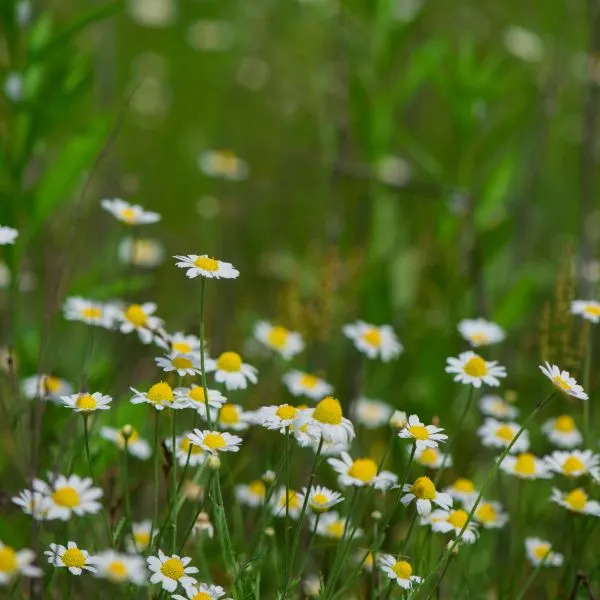
Chamomile is a herb that should not be planted next to mint in the garden bed.
It may pair well with plants like brassicas which benefit from the pest-repellent quality of its scent but not with mint.
Also spelled camomile, chamomile is a flowering plant of the daisy family Asteraceae.
Some parts of this plant are used in the making of healthy beverages because of its antioxidant properties.
It resembles a daisy.
The first sign that mint and chamomile do not thrive side by side is their different moisture preferences.
Mint plants prefer a good amount of water for proper development. Chamomiles are drought-tolerant and do not need too much water.
Another reason is that chamomile can inhibit the production of mint oil which gives it its peculiar smell.
This adversely affects the flavor and aroma of mint plants, making them unsuitable for use as a form of pest control near other crops.
3. Lavender
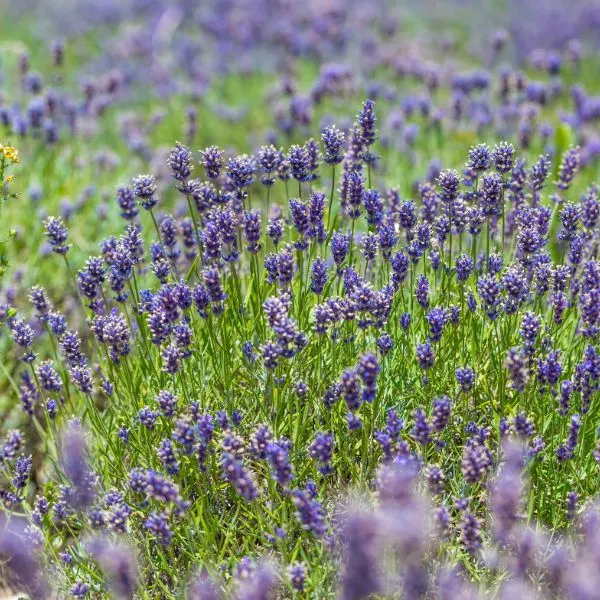
Lavender is a genus of flowering plants belonging to the mint family Lamiaceae.
There are several species in this genus, grown mostly for use as ornamental plants, culinary herbs, and material for producing our extracting essential oils.
Lavender is another companion plant for mint that just doesn’t work.
It may be planted with some other companions of mint to help control pests with its pungent odor.
However, only one should be planted with a mutual companion at a time.
This is because lavender and mint have different needs and these differences cause incompatibility.
We have established throughout this article that mint plants like moisture.
They do not like soggy soil but they like a good amount of water.
On the other hand, lavender plants are drought-tolerant.
They do not need as much water as mint plants do, facing the risks of root and fungal diseases as a result of overwatering.
Growing them together means only one would thrive.
4. Oregano
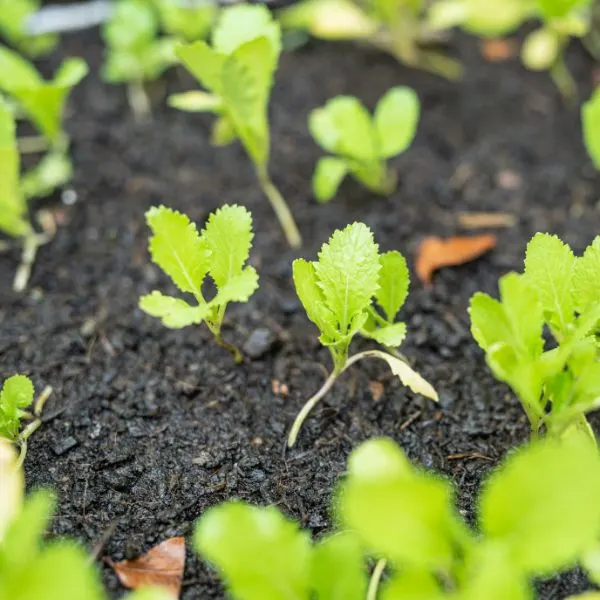
Mint and oregano will not do well together.
Oregano is a woody perennial plant that belongs to the Lamiaceae family.
It is a herbaceous flowering plant that you can grow to control pests and use as a seasoning for food in your kitchen.
Oregano is not mint’s best friend in the garden bed although they are closely related.
It is also a quickly spreading plant that can easily dominate the area in which it is grown. It could compete with mint for nutrients.
Both herbs do not even enjoy growing in similar soils. Like lavender, oregano is mildly drought-tolerant.
It is advised to let the soil of oregano dry out before watering it again. Mint needs consistently moist soil to be healthy.
Besides the competition that may arise between these crops and the fact that they need different growing conditions, it is a bad idea to plant them side by side because they attract the same pests and can share diseases.
5. Parsley
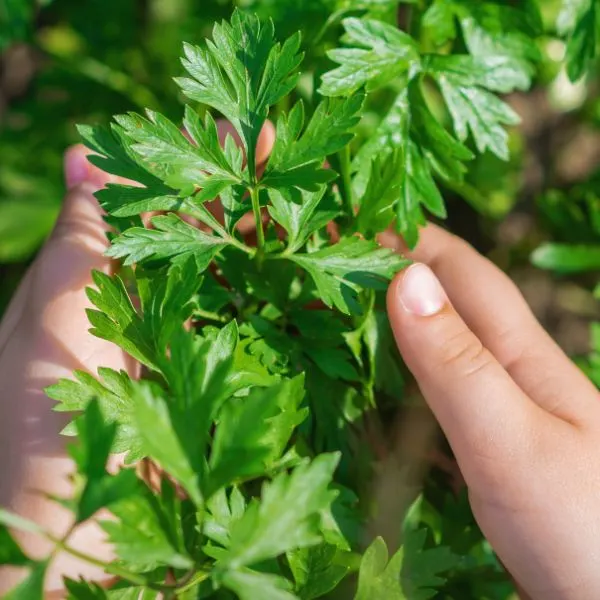
Parsley is a flowering plant cultivated widely across the world for use as a medicinal herb or in cooking as a vegetable.
This aromatic plant belongs to the same family as carrots and may also be referred to as garden parsley.
Mint is not a good companion plant for parsley.
This is because its horizontal and quickly spreading roots can adversely affect those of parsley.
It can choke out and inhibit the growth of this fellow herb.
Otherwise, parsley actually compliments mint.
They both can stand full or partial exposure to sunlight and absolutely love moist but well-draining soil.
Parsley, however, tends to handle drought better than mint does.
6. Rosemary
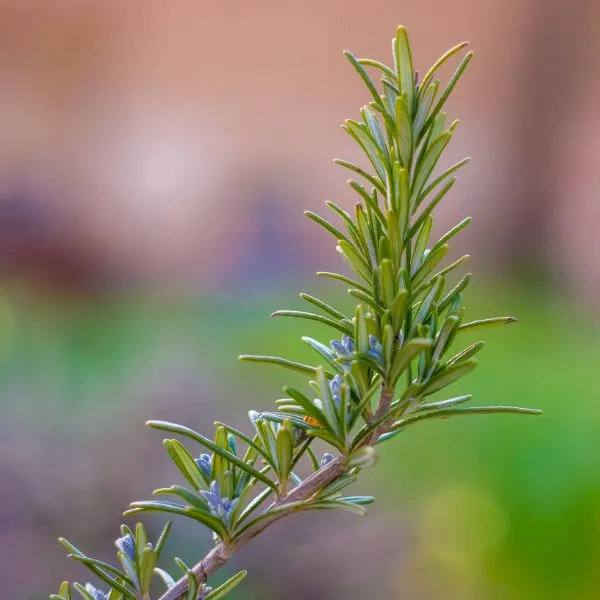
Rosemary is a woody flowering perennial plant with fragrant, evergreen, thin, and needle-like leaves.
The herb is aromatic, owing to the essential oil it produces. It is cultivated for both medicinal and culinary purposes.
This is another herb that cannot grow hitch-free with mint.
For this reason, it is best to keep them far from each other in the garden.
Mints tend to be invasive and take up a lot of root space in your garden.
If they are not properly spaced in your garden, rosemary and mint may compete for soil nutrients.
They are considered to be incompatible too because they require different moisture levels.
Rosemary needs way less water than mint does.
7. Sage
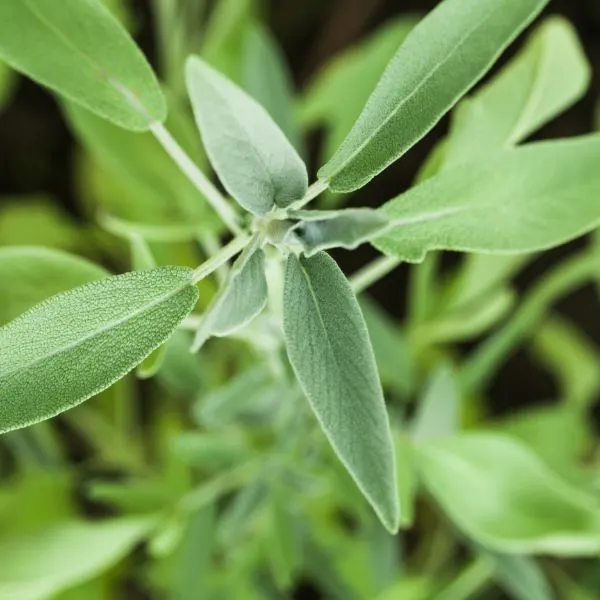
Sage is a perennial flowering plant in the family Lamiaceae.
The aromatic herb has woody stems, stunning blue to purple flowers, and distinct grayish-green leaves.
It is grown mostly for use as a culinary spice or a medicinal herb.
Sage is a companion plant for mint that should be avoided when they are grown side by side in the same soil.
The fast-growing roots of mint compete with sage for nutrients.
Also, sage does not desire as much water as mint does so it creates an imbalance.
When these plants are demarcated, like by planting mint in a separate container, for example, they can be beneficial to each other.
They can help each other control pests, aid pollination, and attract beneficial insects to your garden.
8. Strawberries
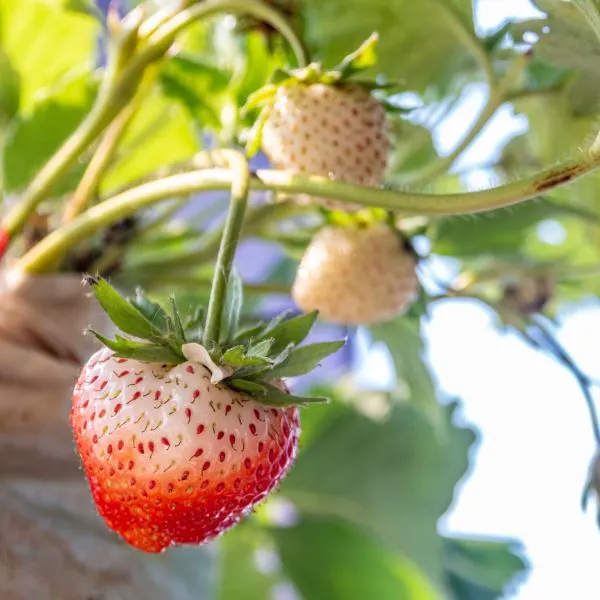
Mint plants and strawberries should not be planted next to each other.
While a mint plant can be beneficial to strawberries by deterring aphids, slugs, and other pests with its scent, strawberries are not good companion plants for mint.
Strawberries can attract some pests that feed on the leaves of your mint.
They are also susceptible to verticillium wilt, a fungal disease that affects many garden plants.
This means strawberries can easily attract pests and spread diseases to mint.
It is advisable to keep mint and strawberries away from each other.
This reduces the risk of fungal diseases spreading throughout the garden bed.
You also save your mint extra attacks from pests attracted to it by strawberries.
9. Thyme
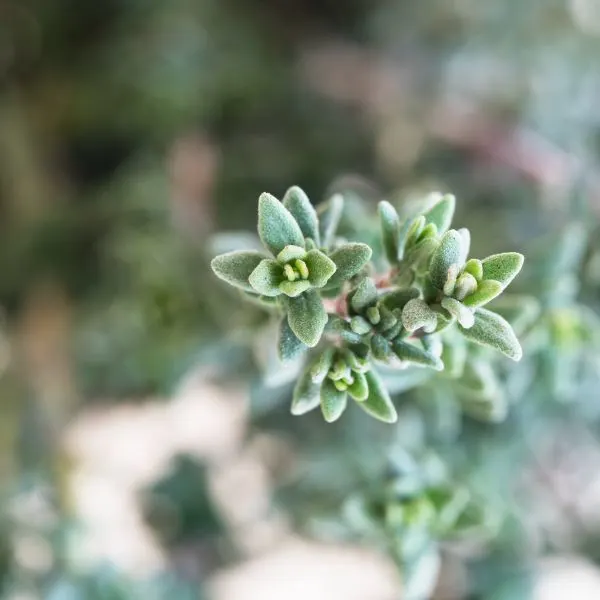
Thyme is an aromatic evergreen herb in the mint family Lamiaceae.
It is a perennial flowering plant closely related to oregano.
This is one more herb that is a should be avoided with mint.
The reason they are incompatible is simply that they have different growing needs.
While mint likes moist soil, most cultivars of thyme are drought resistant.
They tend to need the water in their soil to completely dry out before it is watered again.
Do not plant mint and thyme together.
Only one of the pair is likely to thrive in a relationship of this nature.
It might not be your thyme, as the roots of mint may compete with the thyme for nutrients.
Video on mint companions
FAQs
What should not be planted next to mint?

It is advised that some other herbs like basil, chamomile, lavender, oregano, parsley, rosemary, sage, and thyme.
This is because some of them have different growth and care requirements so planting them with mint will prove to be problematic.
A herb like a chamomile will inhibit the growth of your mint.
Strawberries are also not good companions for mint.
Can you plant mint with other plants?
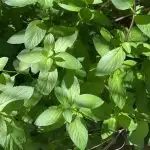
Yes, you can plant mint with other plants.
You have to be careful, however, to ensure that its quickly spreading roots do not dominate the area.
You can make use of a physical barrier or grow the mint in a different container and place it beside the plant in question.
Another option is to simply plant mint with some other crops that can handle its fast horizontal growth.
You can also space mint from the other plant(s) near it.
What herbs can you not plant with mint?
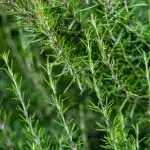
Some herbs you should not plant with mint are basil, chamomile, lavender, oregano, parsley, rosemary, sage, and thyme.
Conclusion
Companion planting is a very beneficial practice, sometimes backed by science, involving the side-by-side cultivation of crops that are useful to each/ one other, some of the crops involved, or one without hurting or harming the other(s).
Cultivated mostly for culinary and herbal use, mint is a genus of flowering plants in the family Lamiaceae that are aromatic and grow all year round.
Good companion plants and bad companion plants for mint are explained above.
Planting mint in your garden benefits other crops besides it by discouraging several pests like ants, aphids, cabbage moths, fleas, houseflies, mosquitoes, and squash bugs because of its very strong scent.
It also attracts beneficial insects like bees, hoverflies, tachinid flies, and wasps through its flowers.
The major disadvantage of growing these plants in your garden is that they grow fast and may be invasive.
However, the consumption of mint provides the body with various benefits as specified in this genus contain several nutrients.
To grow mint with other plants, its growth requirements need to be considered.
It needs soil that is rich and moist but not soggy.
The soil should also preferably have a pH between 6.0 and 7.0 for the plant to find it comfortable.
It needs to be watered regularly and can grow in both full sun and shade.
It however likes about five hours of sunlight each day and constant watering (but definitely not soggy soil).
If you are planting it in a garden, space it from other crops.
Some of the nutrients found in mint are vitamins A, B6, C, and K, calcium, fiber, folate, iron, magnesium, manganese, phosphorus, and potassium.
Apart from eating it, mint can be applied to the skin, inhaled, or taken as a capsule.
This herb provides health benefits to the human body.
It has been proven to provide relief for irritable bowel syndrome and indigestion.
Consuming mint also eases allergies, morning sickness, and respiratory problems.
It also encourages the healthy growth of hair and is used to treat skin-related problems.
The plant boosts both immunity and brain power.
It has been used to improve oral health, provide relief from stress, and aid weight loss.
Check out more plant stuff
